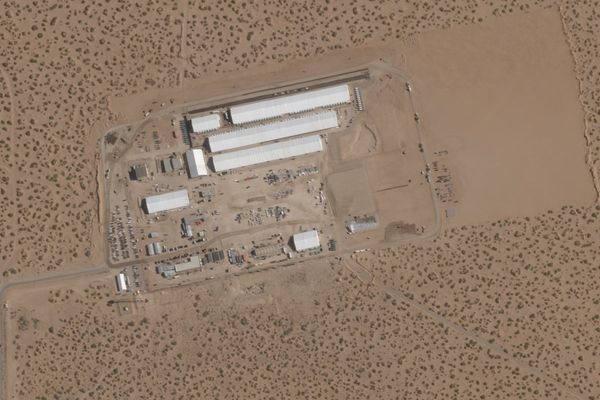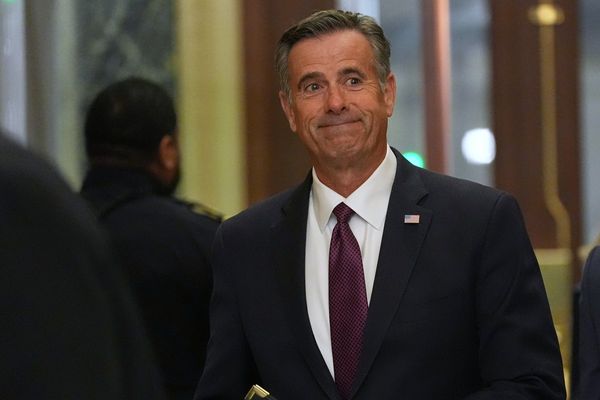
Iran is one of the most repressive countries in terms of press freedom, according to an annual report released Wednesday by Reporters Without Borders, which ranked it 177th of 180 nations. Since the September 2022 death of Mahsa Amini in police custody in Tehran, 72 journalists have been arrested and 25 remain imprisoned, most of them women. FRANCE 24 takes a look at the cases of two journalists who remain behind bars over their reporting on the young Kurdish woman’s death.
Two distraught parents embraced in the empty corridor of a hospital in Kasra, Tehran. They had just learned that their 22-year-old daughter Mahsa Amini had died, three days after being arrested by the morality police for "improperly" wearing her hijab.
Journalist Niloofar Hamedi has been held for more than seven months by the Iranian authorities for capturing this silent moment in a photograph and making it public. A correspondent for the reformist daily newspaper “Shargh”, Hamedi was the first to break the news of the young Kurdish woman’s death on September 16, 2022, by posting the photograph on Twitter.
The post provoked an unprecedented wave of unrest and several months of demonstrations against the Iranian authorities.
Journalist Elahe Mohammadi, 35, is also being held at Qarchak prison south of Tehran. A writer for the reformist daily newspaper “Hammihan”, she was arrested on September 29 for going to Amini's home town of Saqez in Iranian Kurdistan to cover the young woman’s funeral, which gave rise to the first demonstrations following her death.
The Iranian judiciary confirmed in April that the two women were indicted on charges including collaborating with the United States, undermining national security and spreading anti-state propaganda. The two women were formally accused in October of being agents for the CIA.
Symbols of the ‘Women, Life, Freedom’ movement
Denouncing these "grotesque accusations", RSF has demanded the release of the two journalists. In Iran, charges of espionage are punishable by death.
Hamedi and Mohammadi’s cases are of particular concern: "Both have become emblematic of the repression of press freedom in Iran, but also of the (Women, Life, Freedom) movement. They are journalists and women. So they are symbols on many levels. That's why the Iranian government treats them much more severely," says Dagher. "Iran tends to punish journalists who are the first to reveal information more severely, and make an example of them for other women and journalists," adds Dagher.
Nine other female journalists are being held by the authorities, including eight arrested since the uprising that followed Amini’s death. "This is unprecedented in the country and one of the highest figures in the world," says Dagher, noting that female journalists are being targeted "because they play an important role in covering this movement, especially in giving a voice to women who are at the forefront of the protest".
RSF says a total of 72 Iranian journalists have been arrested since Amini’s death on September 16, with 25 still behind bars. The incarcerations earn Iran seventh place among the countries detaining the most journalists, with China in the top spot followed by Myanmar, Vietnam, Belarus, Turkey and Syria.
Released but under pressure
But even for released journalists, "deliverance can become a threat in itself, with sentences that act like swords of Damocles hanging over their heads", says Dagher.
This is the case for Nazila Maroofian, another female journalist who investigated Amini’s death. She was sentenced without trial to a two-year suspended prison term for "spreading false news" and "anti-government propaganda" after spending 71 days in prison. Maroofian, who is from the same city as Amini, was targeted by the Iranian authorities for publishing an interview with her father on the news website “Mostaghel Online”.
Others were released in exchange for signed confessions – "statements of remorse", or promises not to cover certain events or stories – reports RSF.
One of these journalists was Ali Pourtabatabaei, who worked for a local news website in Qom, located 140km south of Tehran, and was one of the first to reveal that young girls were being poisoned using an unidentified gas in schools across the city in November 2022.
Pourtabatabaei was arrested on March 5 amid controversy over the ongoing wave of poisonings. After several weeks in detention, "on the day of his release, the government asked journalists not to cover this story because it was upsetting the public, demanding that they rely only on official sources for all information", says Dagher.
Under these conditions, many Iranian journalists have been forced to flee the country. To manage the influx and provide assistance, RSF set up a crisis unit. Several have since settled in France, others in Canada, the United States and Turkey. But even there they are not safe from intimidation.
"Their families continue to be pressured in Iran," says Dagher, who has collected several personal accounts to this effect. Other journalists have been informed by foreign intelligence services that they are potential kidnapping targets and so have been strongly advised not to travel to countries bordering Iran, including Turkey.
This article has been translated from the original in French.







